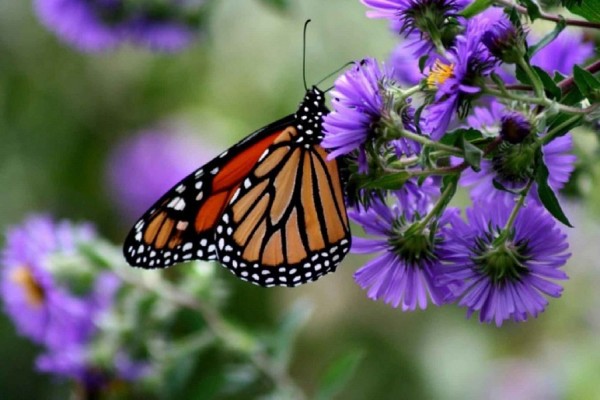By Ana Verayo, | April 15, 2016

Monarch butterfly populations are now making a rebound in Mexico.
Monarch butterflies are known for their amazing internal navigation system that serves as a compass during their annual long distance migrations. In this new study, researchers determined how this butterfly species manage to travel long distances during their migration patterns.
Like Us on Facebook
When summer transitions into autumn, monarch butterflies begin to cross the United States towards down south to warmer, central Mexico, where they will endure a 2,000 mile journey every year.
Researchers from the University of Washington were able to conduct a new study on the insects unraveling the mechanism behind how these tiny creatures manage to sense the correct direction to fly, which is southwest during their yearly journey. Researchers suggest that their internal compass allows them to pinpoint the sun's position along with the time of the day. With the combination of this data, the butterflies can fly in the right direction.
Biologists have known in the past years how monarch butterflies use these two kinds of information to orient themselves however, the precise mechanism how their brains receive and process this data has been unknown until these new findings.
Similar to humans, monarch butterflies also have an internal clock, that is controlled by the natural rhythms of clock genes. These inner workings of this timekeeping system are located in the colorful insects' antennae as they receive information processed by their brains. Along with visual data from the large eyes of the butterflies, the tiny creatures are able to identify the correct direction.
According to Eli Shlizerman from the University of Washington, they created a new model that takes into consideration these two types of data, taken from the antennae and eyes while sending this information to the brain. The goal of this model is to determine the type of control mechanism that is occurring inside the brain and to incorporate sustained navigation in the southwest direction.
Monarch butterfly populations have been declining in the past years, due to the disappearance of milkweed, which is a plant that the butterflies eat and hatch their larvae.
The results revealed that in the event that the butterflies become lost or suddenly thrown off course during their long journey, they do not opt to turn to a short cut towards their destination. Instead, the creatures rely on a specific separation point and pinpoints whether they should turn left or right.
When it is time to return back to the north for spring, the butterflies simply reverse these mechanisms towards the opposite direction where they are also guided to the northeast United States. This new study is published in the journal Cell Reports.
-
Use of Coronavirus Pandemic Drones Raises Privacy Concerns: Drones Spread Fear, Local Officials Say

-
Coronavirus Hampers The Delivery Of Lockheed Martin F-35 Stealth Fighters For 2020

-
Instagram Speeds Up Plans to Add Account Memorialization Feature Due to COVID-19 Deaths

-
NASA: Perseverance Plans to Bring 'Mars Rock' to Earth in 2031

-
600 Dead And 3,000 In The Hospital as Iranians Believed Drinking High-Concentrations of Alcohol Can Cure The Coronavirus

-
600 Dead And 3,000 In The Hospital as Iranians Believed Drinking High-Concentrations of Alcohol Can Cure The Coronavirus

-
COVID-19: Doctors, Nurses Use Virtual Reality to Learn New Skills in Treating Coronavirus Patients







